|
   |
|
Page 3 |
Newsletter 123, WInter 2018 © Hampshire Mills Group |
|
Sherborne Mill, Sherborne St John
Ruth Andrews
Pictures by Keith and Ruth Andrews and Harry Clarke
|
|
In 2013 when several members of HMG were visiting
mill sites for book 3 of Mills and Millers of
Hampshire, we visited this site but were unable
to contact anyone, so the entry in the book was
based on our observations. Two months ago we were
delighted to be contacted by Harry Clarke who
purchased the property in 2015. He and his partner
Devika are installing a new 3.8m overshot waterwheel
to generate electricity to harness the water power
of this long neglected site.
When Keith and I visited the site in October work
had started on a new building and wheelpit on the
site of the mill. The concrete currently visible
will soon be disguised with the original bricks.
The photo below was taken from the mill dam, with
the mill pond off to the right.
|

Note the reed bed in the silted mill pond and a
woody bole – the remains of a large willow tree that
had cracked open the masonry leat |
|
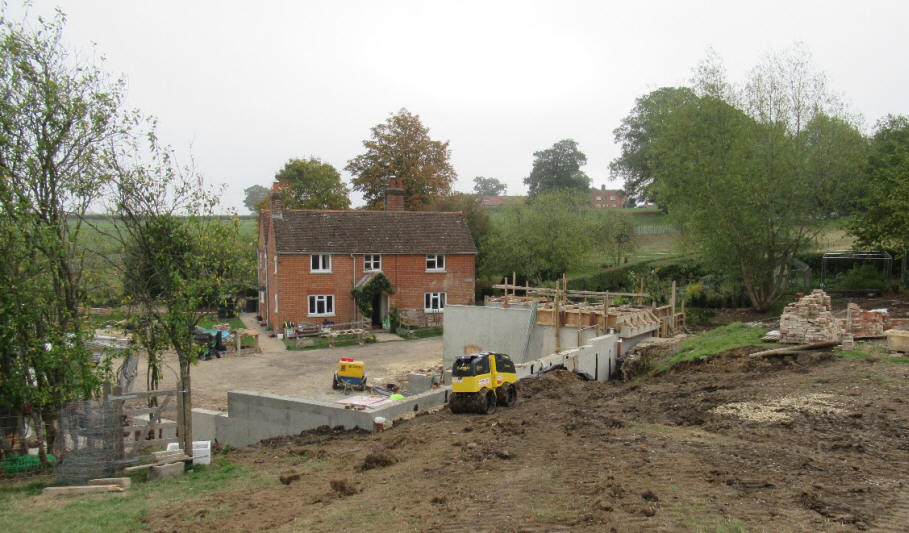
|
 |
 |
|
Several millstones, part of the original wheel, and
a lot of pieces of timber were found on the site |
|
Harry writes:
Three mills are mentioned in Domesday in Sherborne
St John so we believe this to be one of them and
hence an old site. We moved here in 2015 having
bought the house and surrounding land from Charles
Horton. His father Percy bought it as part of a
larger parcel of land from the elderly Sir Leonard
Chute, owner of the Vyne Estate in 1954 four years
before the last of the Chutes died in 1958 leaving
the rump of his estate to the National Trust. Prior
to that we believe it had for centuries been part of
the Vyne Estate.
Sherborne St John does as the name suggests have
many streams of clear water. It sits on a spring
line that runs right through the village and is
essentially where the permeable Hampshire chalk
encounters the Reading and Lambeth clay beds of the
impermeable London clay basin. The three feeder
stream for our site all rise within half a mile of
the mill site itself either to the west or north.
On our arrival the site was as described in the HMG
book. As we drove back the vegetation we firstly
exposed the ‘waterfall’ and the vestigial walls. We
also rediscovered the masonry leat, control sluice
for the bypass tunnel, 200 foot masonry bypass
tunnel, and the ram pump drive pipe entry pit. The
masonry leat was badly cracked and one flank wall
had clearly collapsed at one time allowing the water
in the mill pond to escape around the side, carving
a channel that can be seen in the photograph in the
book. |
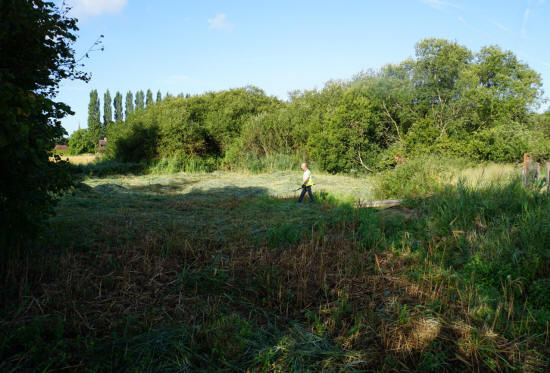
The silted-up mill pond –
you could easily walk on the reed bed which had
grown up
|
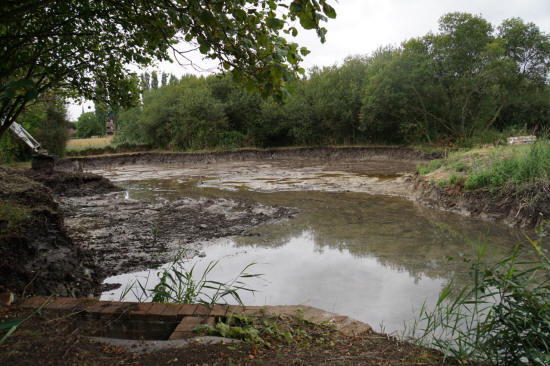
The mill pond after 4500 tonnes of silt had been
excavated |
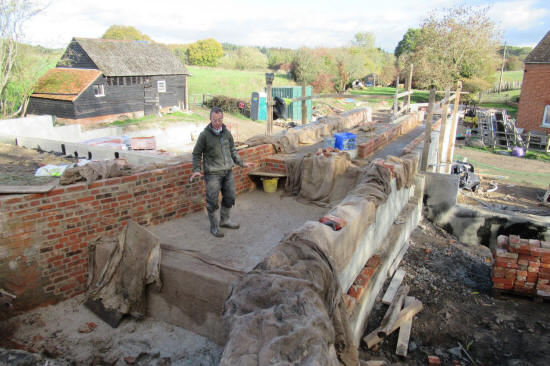
Harry in the head race |

Many of the bricks being used to clad the concrete
come from the site, the remnants of the 1797 mill
and even older buildings
|
|
Having measured the flow (80 litres/sec rising to
200 in winter) and realising the head was about 4.5
metres it was clear that electrical power could be
produced here, despite the fact that the feeder
streams were probably diminished in flow when
compared to historical times.
The building we are putting back is going to contain
an epicyclic gearbox and generator attached axially
to the wheel but is largely going to be used for
vehicle and tractor garaging with storage in the
eaves.
|
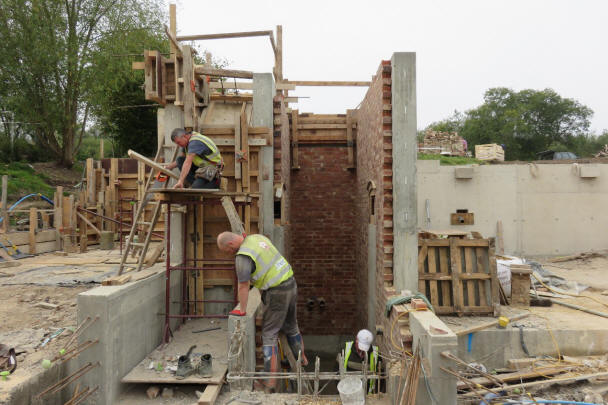
The wheelpit under construction
The new 3.8m steel waterwheel being constructed at
the
factory of Smith Engineering in Maryport, Cumbria,
with Rod, the founder and managing director
|
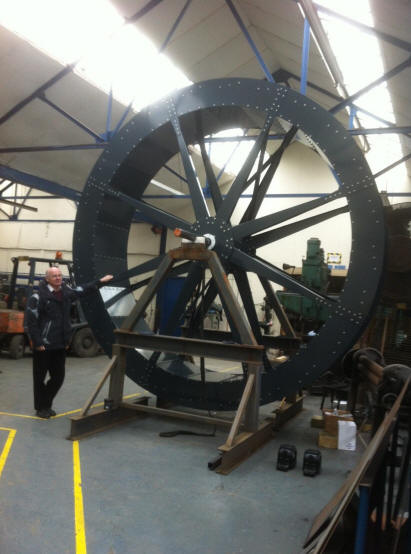 |
|
The construction is scheduled to take place over two
years. Due to the dampness of the site we are only
constructing from April to end of October in 2018
and 2019. The first phase of foundations and
concrete and major landscaping and installation of
the wheel is nearing completion pretty much on
schedule. Next year is brick skins, first floor
(block and beam), roof framing (green oak), roofing
in hand-made clay tiles with obviously first and
second fits, windows, doors, final finishes, and
detailed landscaping.
|
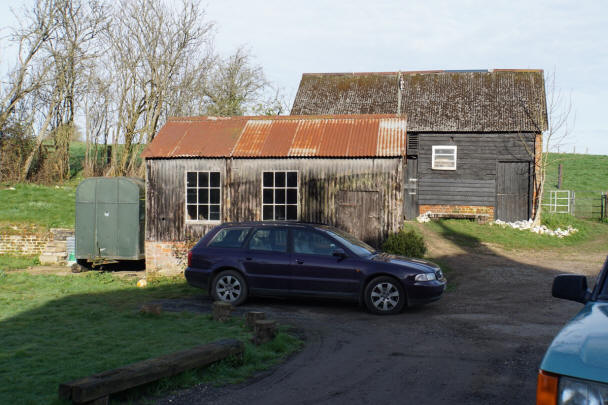
The tin shed which was appended to the mill and from
1891 to the 1920s powered the mill equipment via a
steam engine and pulleys (due to the silting of the
mill pond) before the mill finally fell into
complete disuse in the late 1920s. This has since
been relocated to elsewhere on the site. The
weather-boarded building behind dates from 1837, and
is a
brick and timber oak frame barn for animals and
feedstuff.
The Green & Carter ram pump (photo right) which had
survived on site
is being refurbished and will be reinstalled inside the building
|
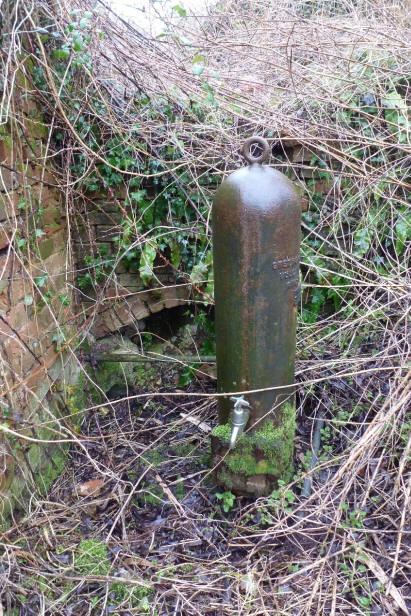 |
|
Ruth
writes:
By the time of our third visit, the wheel was
installed and turning, although the electrical work
and the construction of the launder was still to be
completed.. The wheel is designed to generate 4kW
when turning at 6rpm.
|
|

This picture was taken during the process of bolting
together the two halves of the wheel
which had to be split to be transported from Cumbria
|
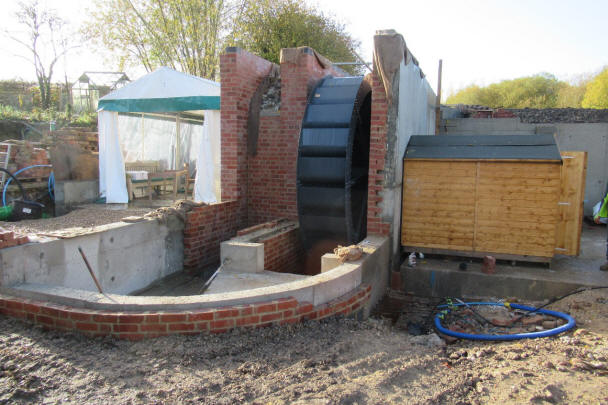 |
The wheel is now in its final position. A garden
shed forms a temporary cover for the electrical kit,
although when work is completed next year it will be
inside the new building. The curved brickwork in
the foreground is going to form an ornamental pond
in front of the overspill waterfall. The tail race
flows away underground in a tunnel, as it always
did. |
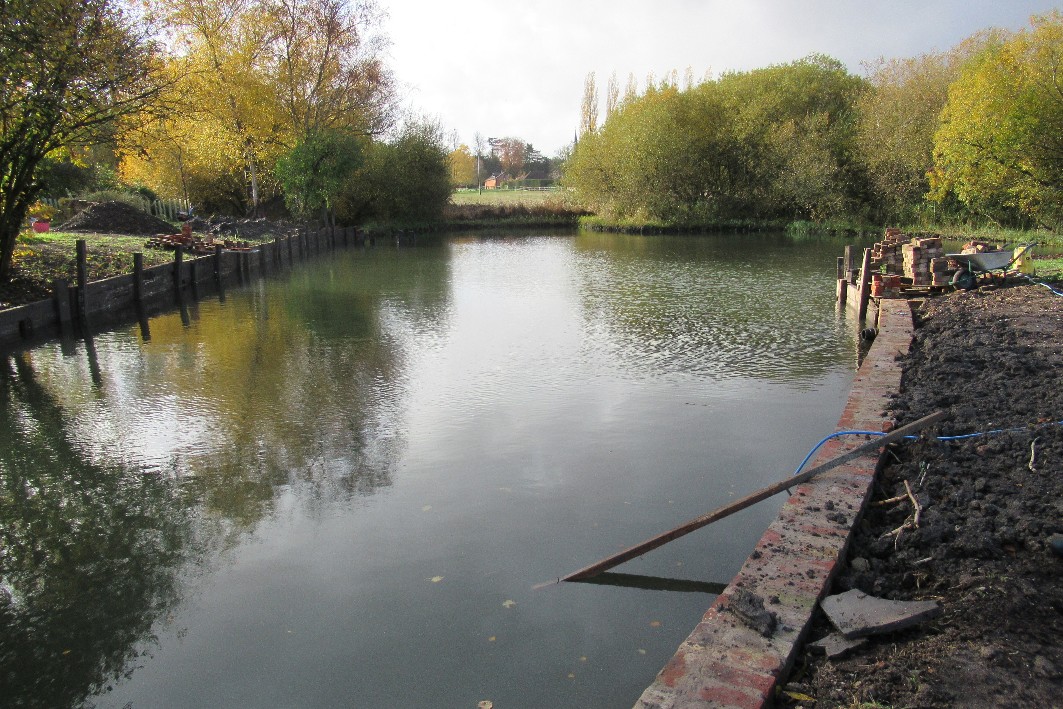 |
The heavy rain at the start of November may have
hampered the building work, but it has certainly
filled up the mill pond spectacularly.
Many thanks to Harry and Devika for inviting us to
examine and report on their exciting and brave
project.
|
|
See the next article on
Other Mills at Sherbourne St John |
   |
|
|
